Instructions for Side by Side Printing
- Print the notecards
- Fold each page in half along the solid vertical line
- Cut out the notecards by cutting along each horizontal dotted line
- Optional: Glue, tape or staple the ends of each notecard together
Human A&P exam 2
front 1 Introduction | back 1
–Pulmonary circuit— takes blood to and from the lungs –Systemic circuit—vessels transport blood to and from body tissues
|
front 2 The Heart... | back 2
–Beats 100,000 times/day or 35 million times/year –Pumps 5 liters of blood/minute |
front 3 Pulmonary and Systemic Circuits | back 3 
–Right side receives oxygen-poor blood from the body tissues –Pumps this blood to the lungs –Picks up oxygen and dispels CO2
–Left side receives oxygen-rich blood returning from the lungs –Pumps this blood throughout the body –Supplies O2 and nutrients to the body tissues |
front 4 Location and Orientation within the Thorax | back 4 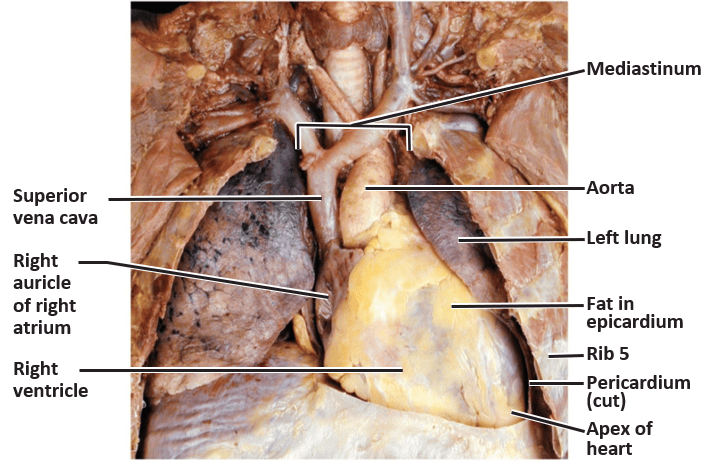
–About the size of your fist
–Located between the lungs –Apex lies to the left of the midline –Base is the broad posterior surface |
front 5 Pericardium of the Heart—Coverings | back 5 
–fibrous pericardium: strong layer of dense connective tissue –Serous pericardium: formed from two layers
–Epithelial cells secrete lubricating serous fluid that reduces friction |
front 6 Three Layers of the Heart Wall | back 6 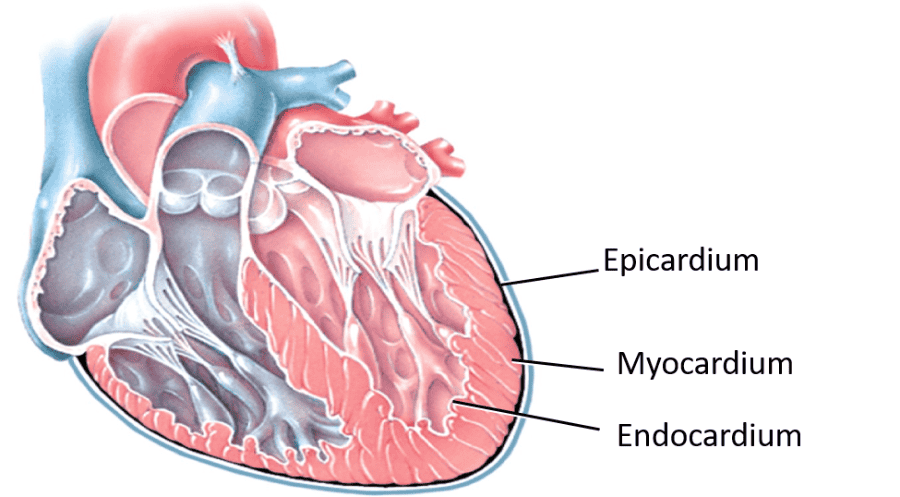
|
front 7 Epicardium: | back 7
–Thin, transparent layer |
front 8 Myocardium: | back 8
–Cardiac muscle, responsible for pumping action |
front 9 Endocardium: | back 9
–Simple squamous epithelium –Lines inside of the myocardium –Covers heart valves and tendons attached to the valves –Continuous with the epithelial lining of large blood vessels |
front 10 Layers of the Pericardium and of the Heart Wall | back 10 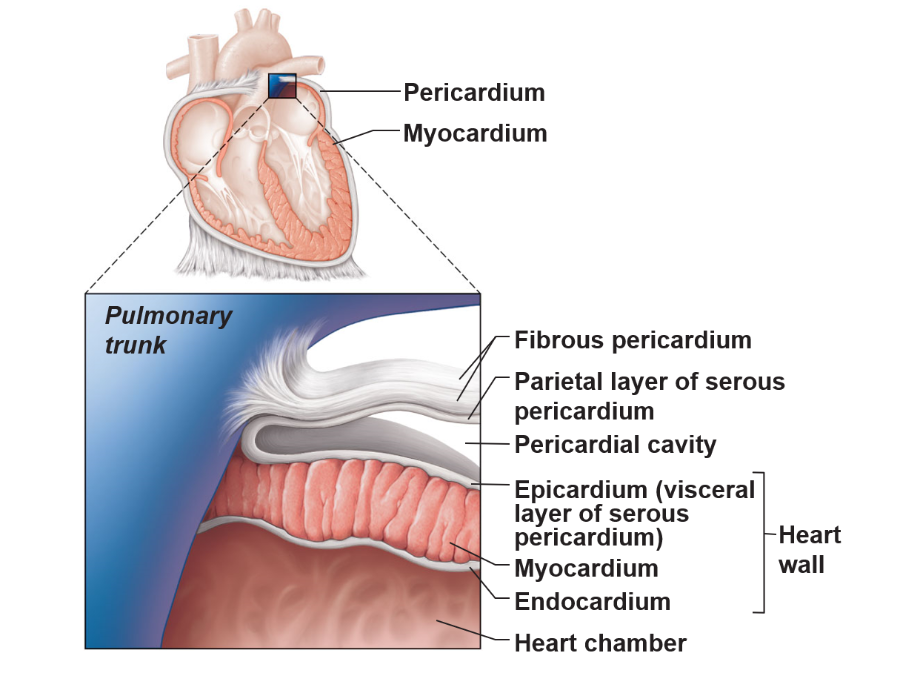 |
front 11 Arrangements of Cardiac Muscle Bundles | back 11 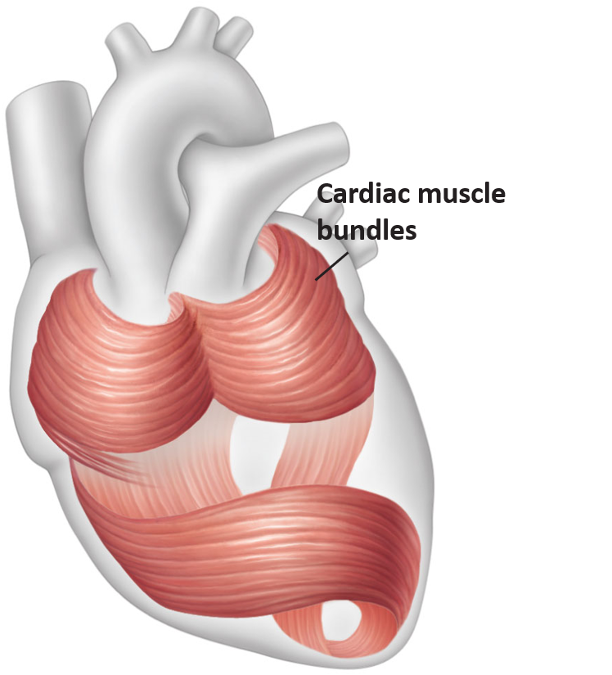
|
front 12 Heart Chambers | back 12 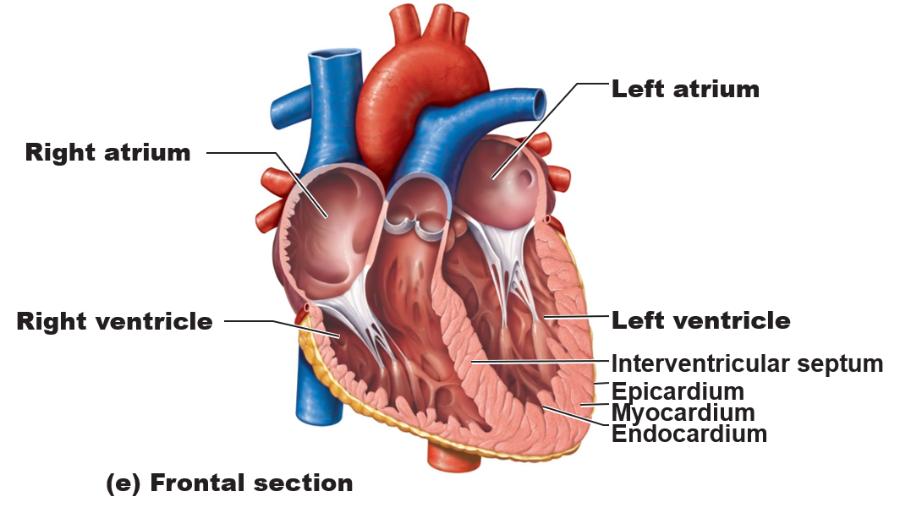
|
front 13 External Markings | back 13 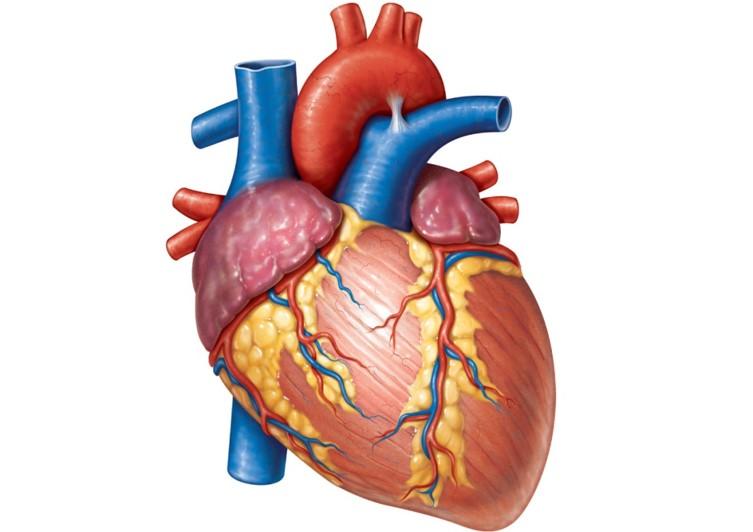 –Coronary sulcus forms a crown encircling a boundary between atria and ventricles –Anterior interventricular sulcus |
front 14 Right Atrium | back 14 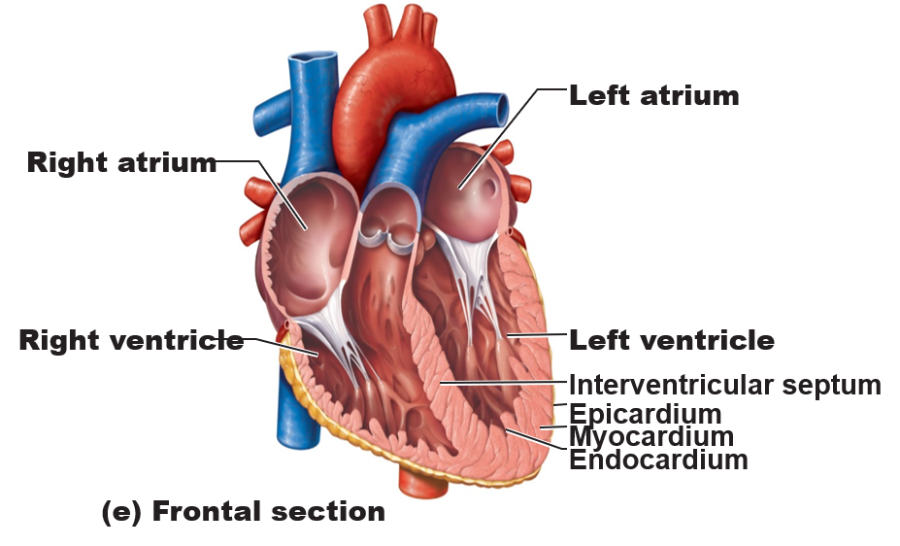
–Superior and inferior vena cava and coronary sinus |
front 15 Right Ventricle | back 15 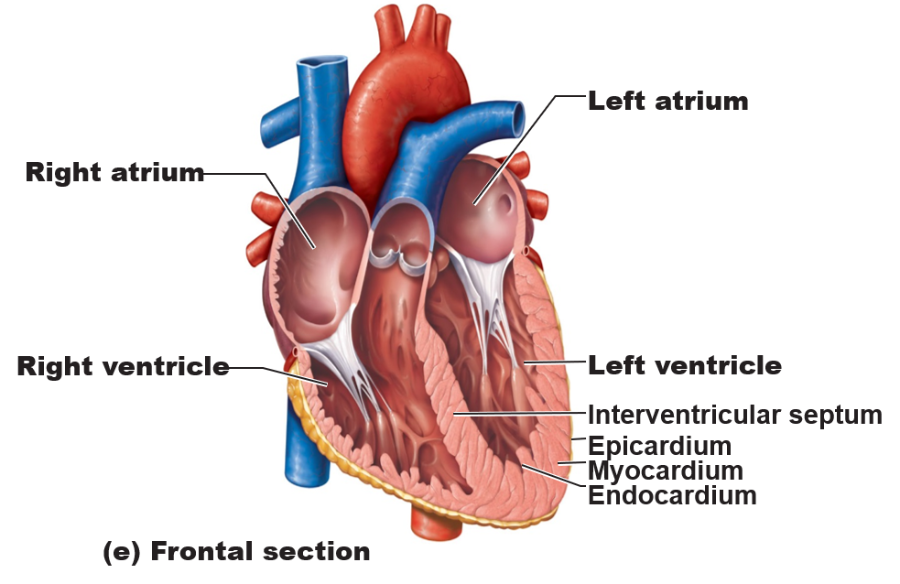
|
front 16
| back 16  –Chordae tendineae: bands attached to cusps of right tricuspid valve –papillary muscles: attached to chordae tendineae |
front 17 Pulmonary semilunar valve: | back 17
|
front 18 Left Atrium | back 18 
-Through two right and two left pulmonary veins
|
front 19 Left Ventricle | back 19 
–Chordae tendineae: attached to cusps of left mitral valve –Papillary muscles
–Pumps blood through systemic circuit via aortic semilunar valve (aortic valve) |
front 20 Heart Valves—Valve Structure | back 20 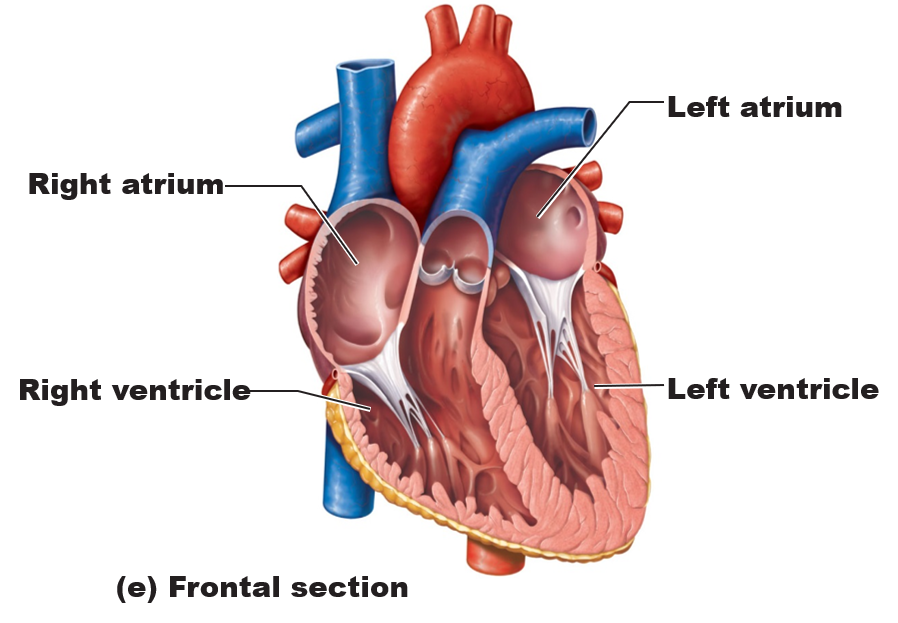
–Designed to prevent back flow in response to pressure changes in the heart chambers
–Two or three cusps |
front 21 Heart Valves—Valve Structure | back 21 
–Right tricuspid valve (3 cusps) –left bicuspid valve (2 cusps)
–3 cusps |
front 22 Heart Valves | back 22 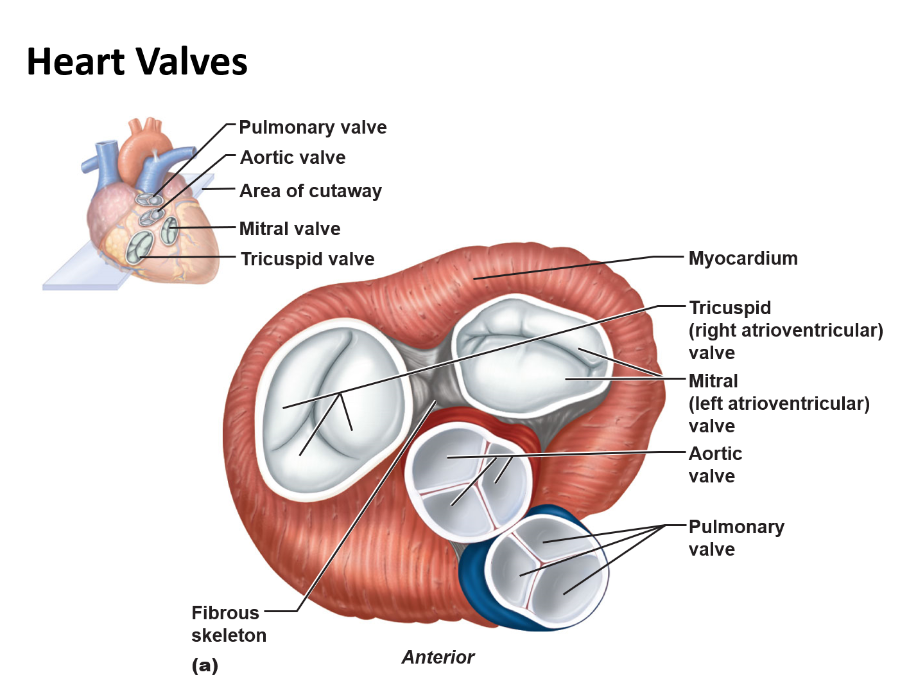 |
front 23 Function of the Atrioventricular (AV) Valves | back 23 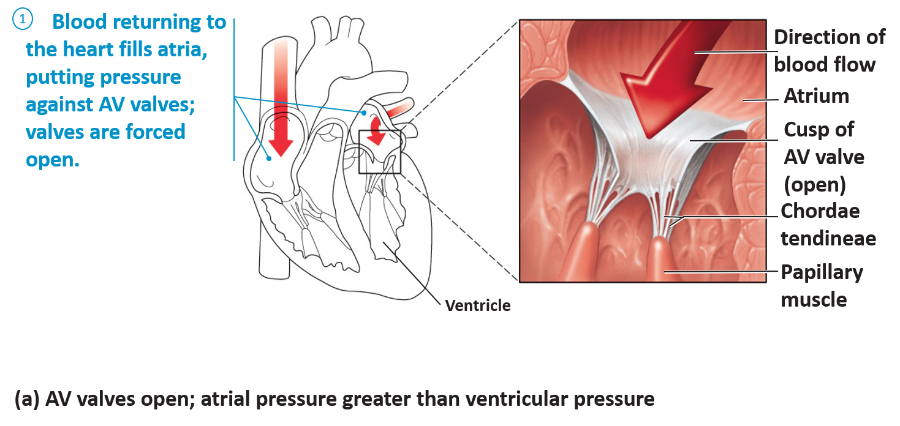 (a) AV valves open; atrial pressure greater than ventricular pressure |
front 24 Function of the Atrioventricular (AV) Valves | back 24 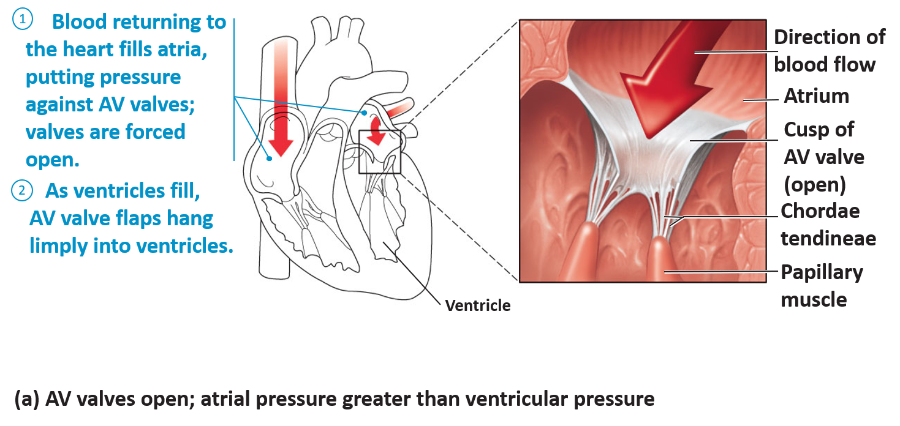 (a) AV valves open; atrial pressure greater than ventricular pressure |
front 25 Function of the Atrioventricular (AV) Valves | back 25 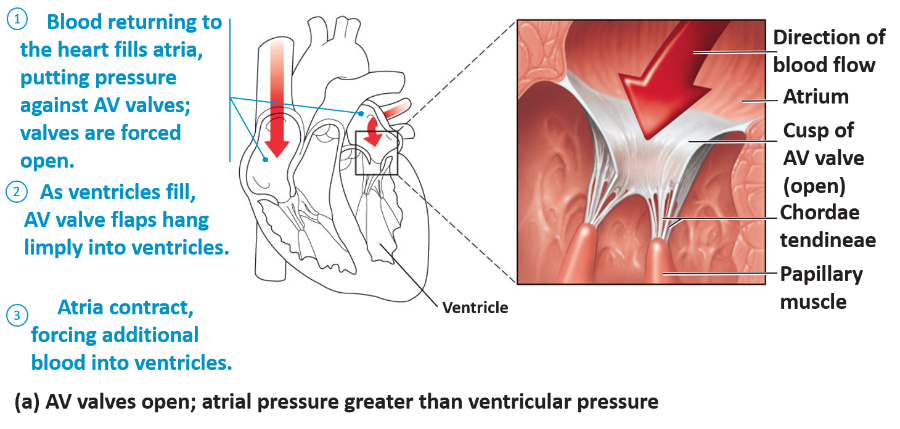 (a) AV valves open; atrial pressure greater than ventricular pressure
|
front 26 Function of the Atrioventricular (AV) Valves | back 26 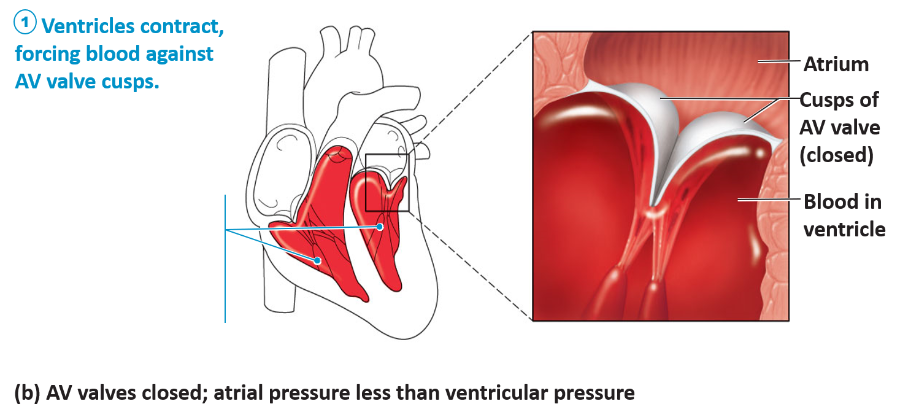 (b) AV valves closed; atrial pressure less than ventricular pressure |
front 27 Function of the Atrioventricular (AV) Valves | back 27 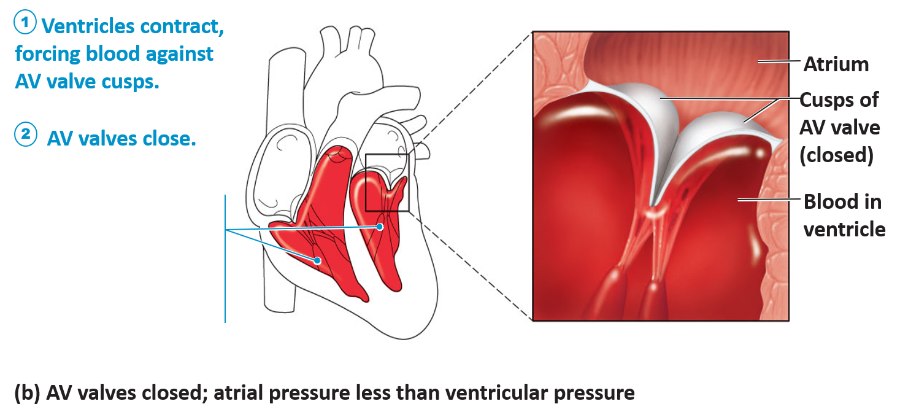 (b) AV valves closed; atrial pressure less than ventricular pressure |
front 28 Function of the Atrioventricular (AV) Valves | back 28 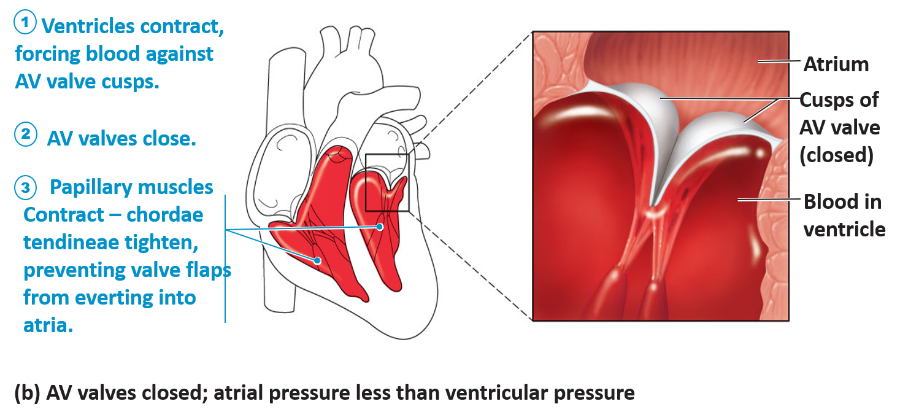 (b) AV valves closed; atrial pressure less than ventricular pressure
|
front 29 Function of the Semilunar Valves | back 29 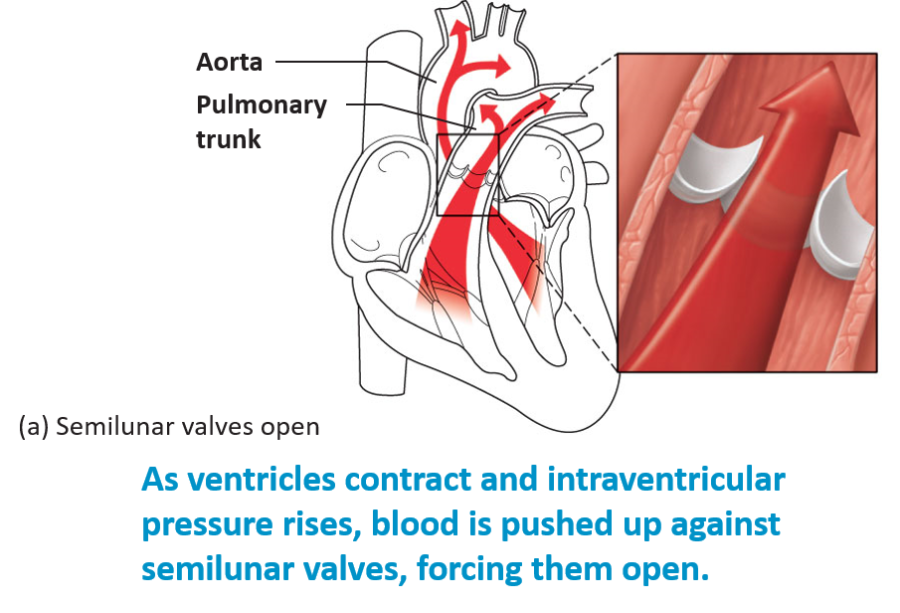
–Valves pushed open –Cusps flattened against artery walls |
front 30 Function of the Semilunar Valves | back 30 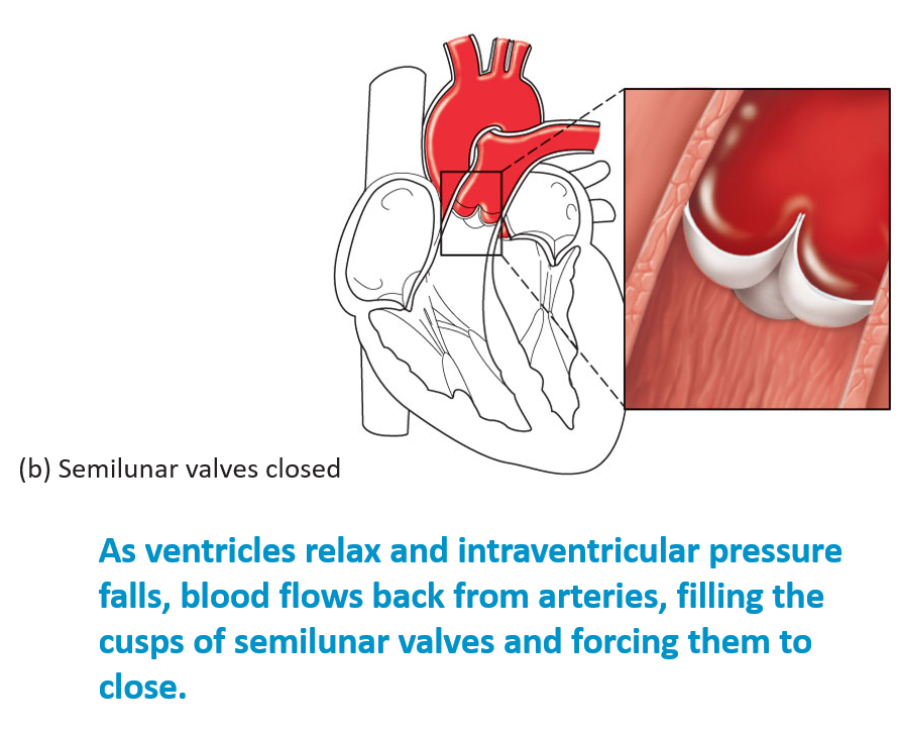
–Back flowing blood closes valves |
front 31 Pathway of Blood Through the Heart | back 31 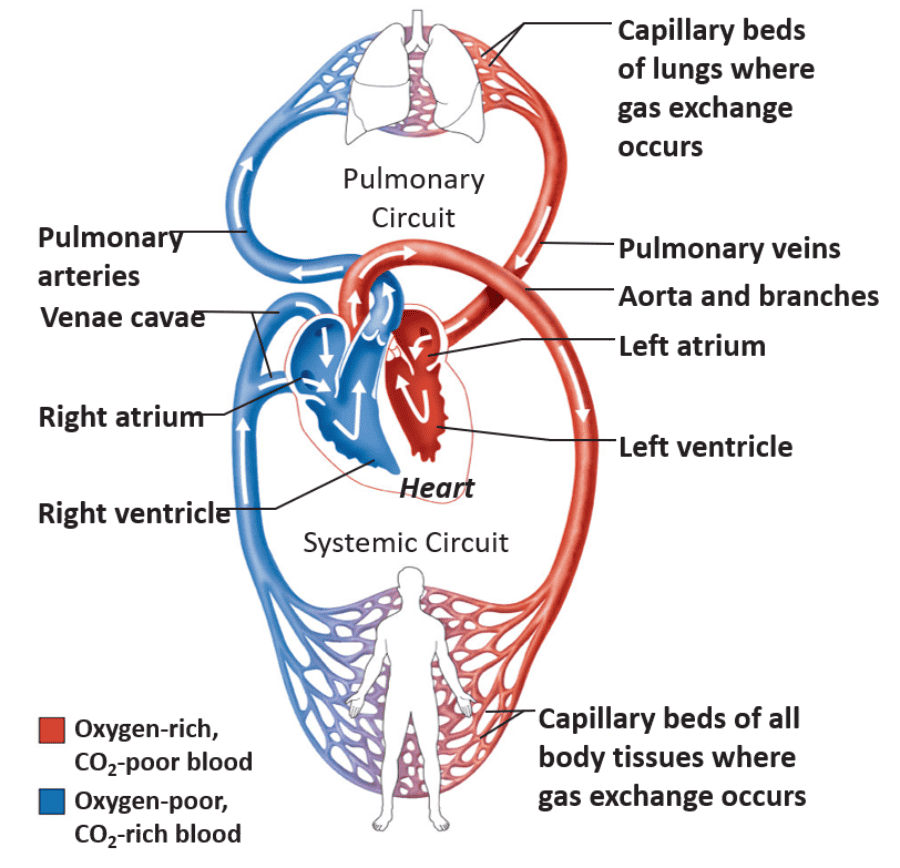
–Go through pulmonary and systemic circuits –A drop of blood passes through all structures in sequence
|
front 32 Blood flow through the heart. | back 32  |
front 33 Structure of Heart Wall | back 33
–atria—thin walls –Ventricles—thick walls
–Systemic circuit longer than pulmonary circuit –Offers greater resistanceto blood flow |
front 34 Structure of Heart Wall | back 34 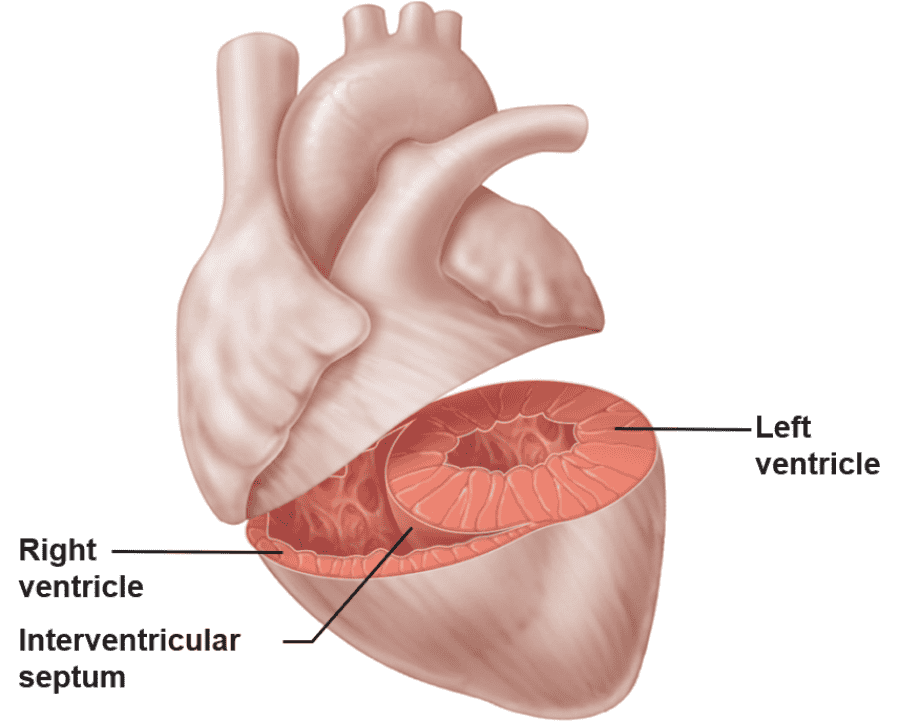
–Exerts more pumping force –Flattens right ventricle into a crescent shape |
front 35 Cardiac Muscle Tissue | back 35
–Cardiac muscle cells
–Contractions
|
front 36 Cardiac Muscle Tissue | back 36
–Adjacent cells interlock through meshing ‘fingers’ –Fasciae adherens
–Gap junctions
|
front 37 Blood Supply to the Heart | back 37
–Left and right coronary arteries –Arise from the aorta –Located in the coronary sulcus |
front 38 Blood Supply to the Heart – Coronary Arteries | back 38 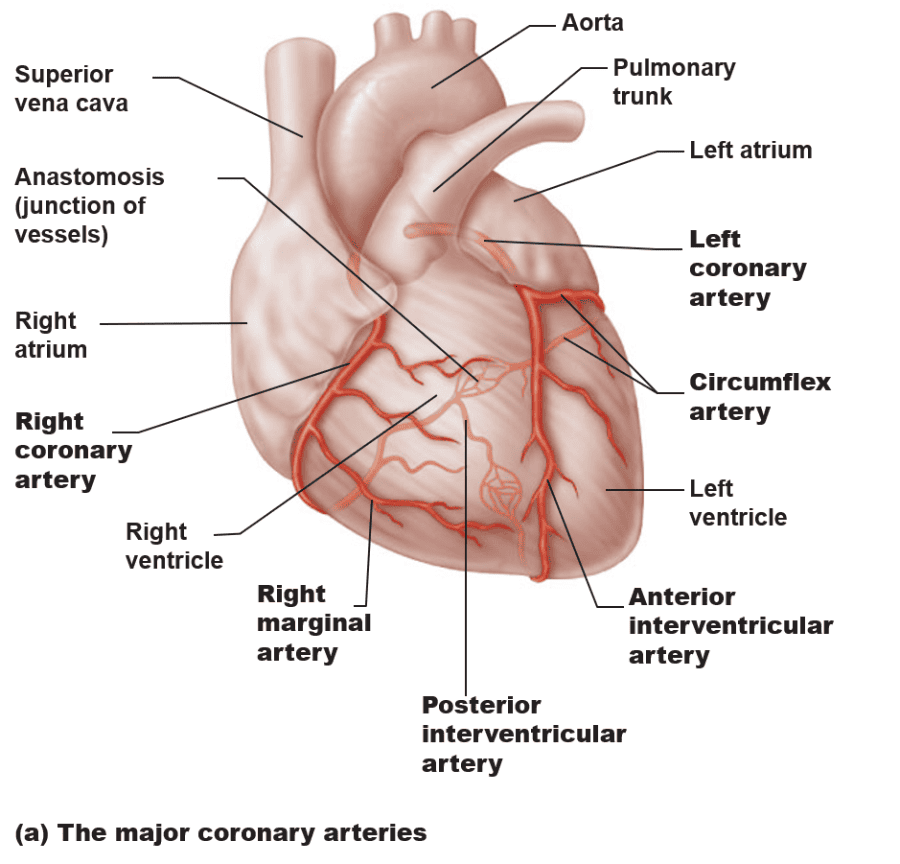 |
front 39 Blood Supply to the Heart | back 39
–Into right atrium –Occupy sulci on the heart surface
|
front 40 Blood Supply to the Heart – Cardiac Veins | back 40 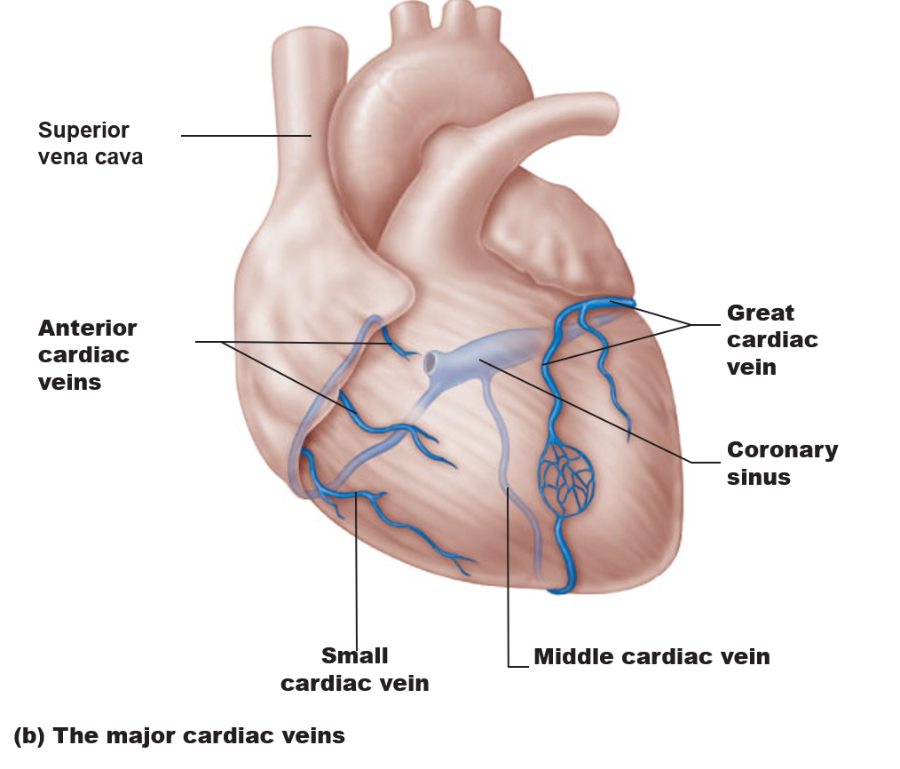 |
front 41 Blood Vessels | back 41 Delivery system of dynamic structures that begins and ends at heart
Carry blood away from heart Oxygenated except for pulmonary circulation & umbilical vessels of fetus
Contact tissue cells Directly serve cellular needs
Carry blood toward heart Deoxygenated except for pulmonary circulation |
front 42 Generalized structure of arteries, veins, and capillaries | back 42 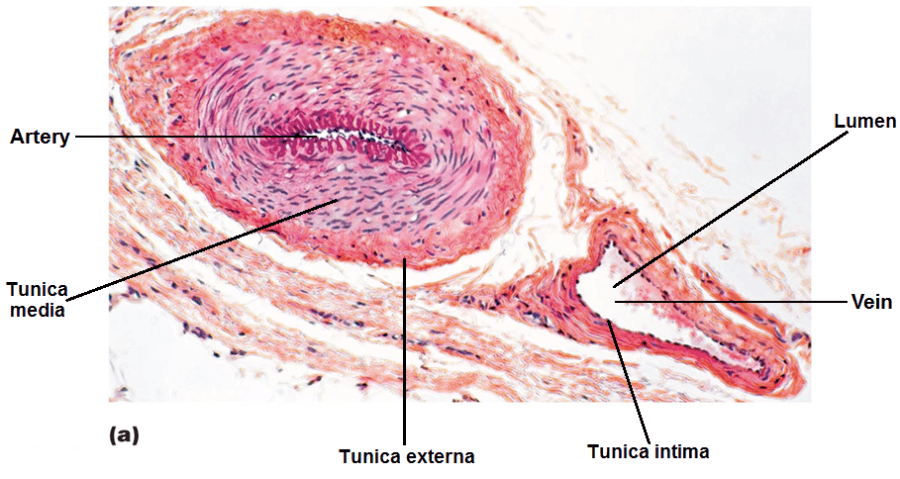 |
front 43 Structure of Blood Vessels | back 43 Except for the smallest, composed of three layers (tunics) Innermost -> outermost
(simple squamous epithelium) Smooth surface; Continuous with endocardium of heart “Intimate” contact with blood
Contraction causes vasocontriction (smaller vessel diameter) Relaxation causes vasodilation (larger vessel diameter) Influence blood flow and blood pressure
Contains many collagen and elastic fibers Cells and fibers run longitudinally Vasa vasorum (vessels to the vessels): tiny arteries, capillaries, veins |
front 44 Generalized structure of arteries, veins, and capillaries | back 44 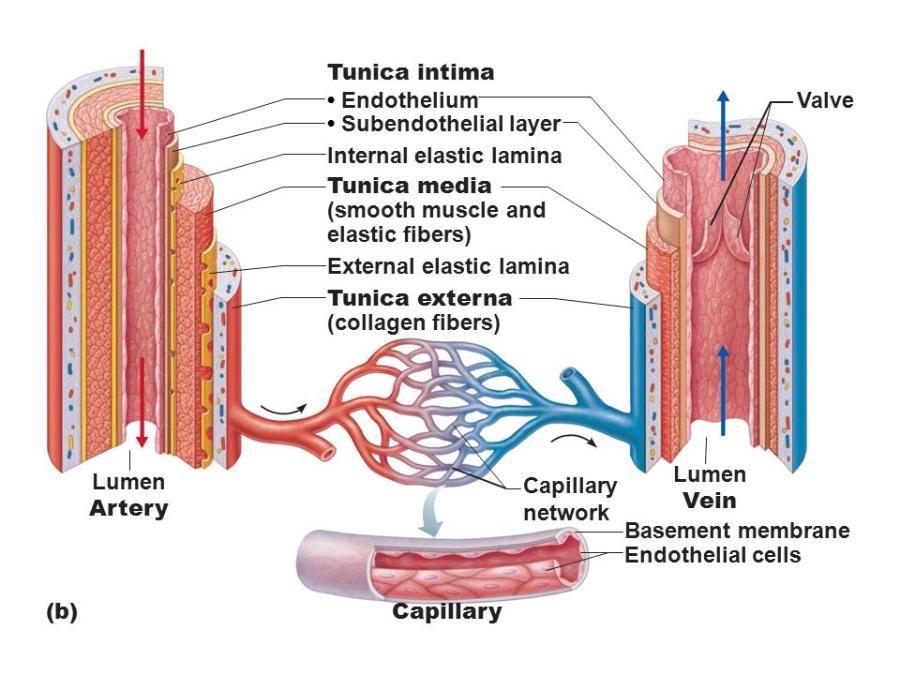 |
front 45 Types of Arteries | back 45
Elastic arteries --> Muscular arteries --> Arterioles |
front 46 The relationship of blood vessels to each other and to lymphatic vessels | back 46 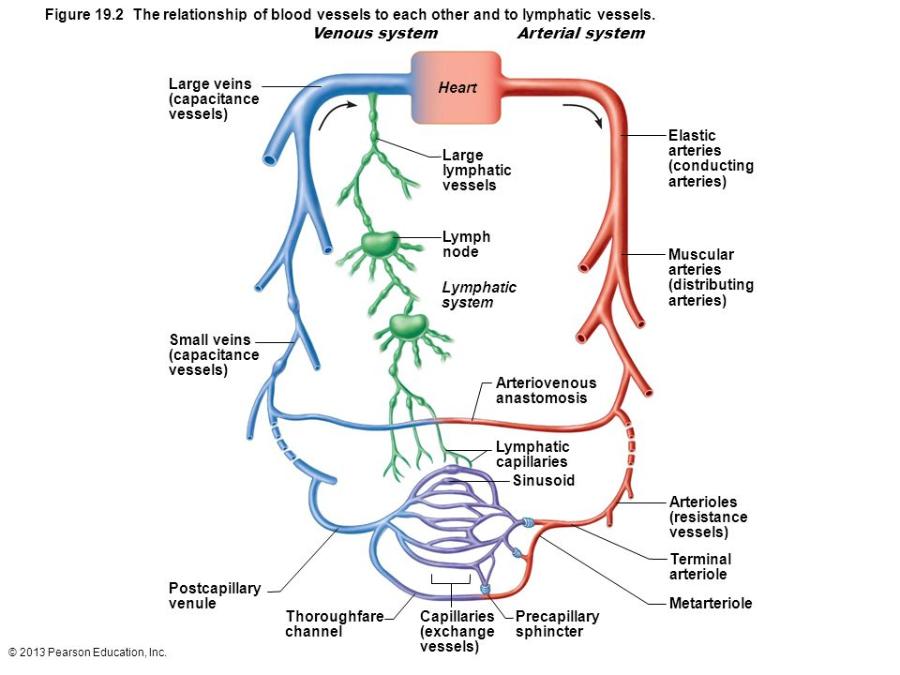 |
front 47 Types of Arteries
| back 47 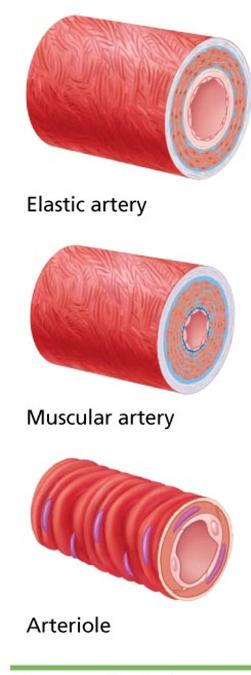
|
front 48 Types of Arteries
| back 48
|
front 49 Types of Arteries
| back 49
|
front 50 Capillaries | back 50 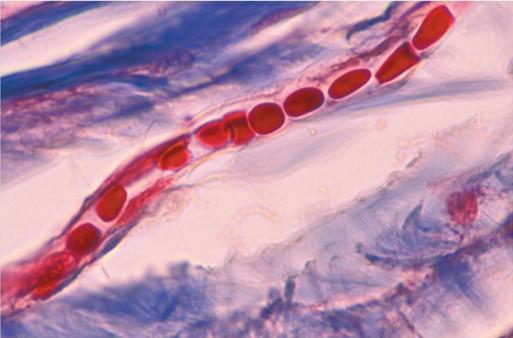 smallest blood vessels – diameter from 8–10 µm
Site-specific functions of capillaries Lungs: oxygen enters blood, carbon dioxide leaves Small intestines: receive digested nutrients Endocrine glands: pick up hormones Kidneys: removal of nitrogenous wastes |
front 51 Capillary Permeability | back 51
But junctions are incomplete…
Passageway for small molecules to enter and exit
Increases permeability |
front 52 Types of capillaries- based on structure: | back 52
Found in most organs (skeletal muscle, lungs, skin, CNS)
Occur where high exchange rates are needed (kidney, small intestines)
Occur in limited locations (liver, bone marrow, spleen) |
front 53 1.Continuous capillaries | back 53 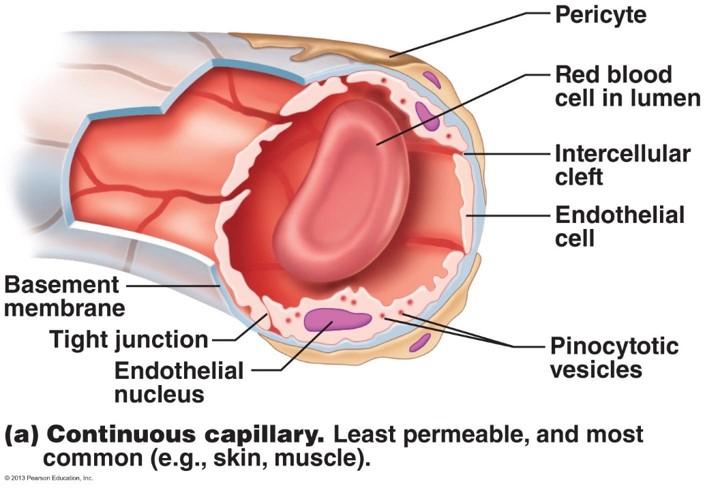 |
front 54 1.Fenestrated capillaries | back 54 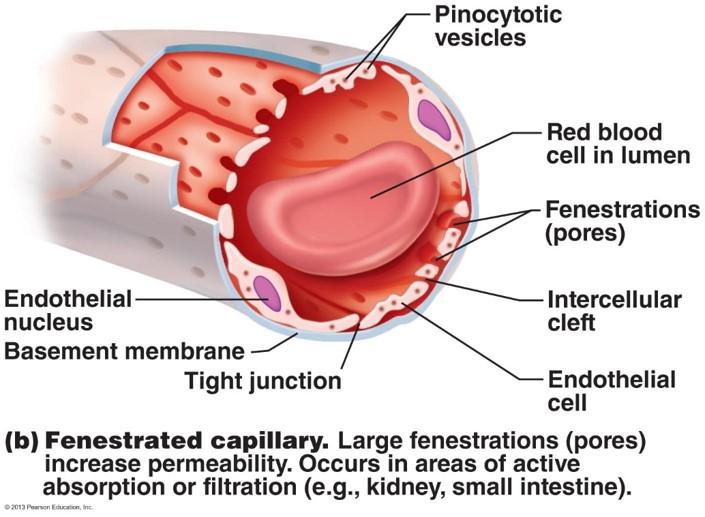 |
front 55 1.Sinusoid capillaries (sinusoids) | back 55 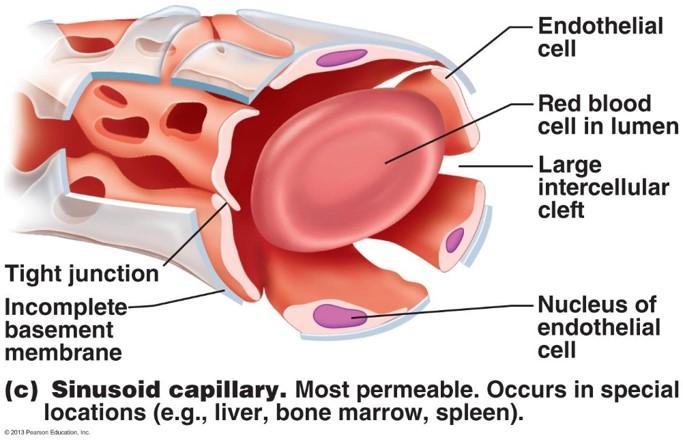 |
front 56 The relationship of blood vessels to each other and to lymphatic vessels. | back 56  |
front 57 Capillary Beds | back 57 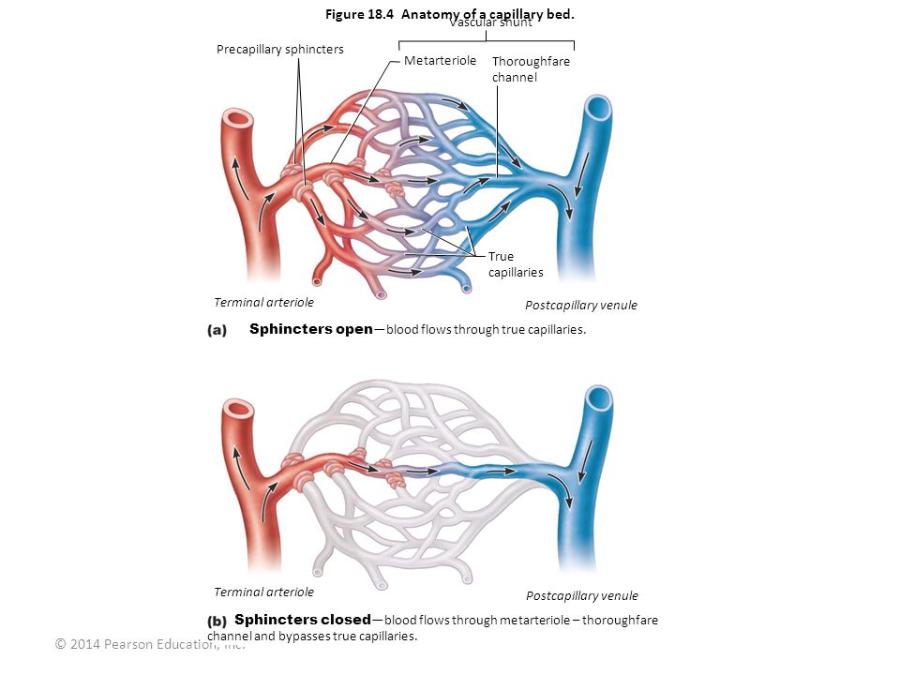
Composed of smooth muscle cells Regulated by local chemical conditions and vasomotor nerves |
front 58 Veins | back 58 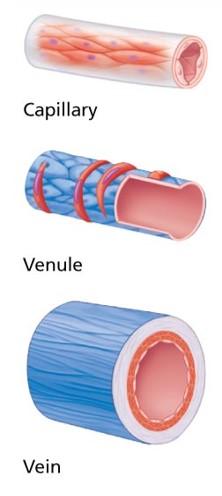 Venules: smallest veins Form when capillaries unite
Veins Conduct blood from capillaries toward the heart
Capacitance vessels i.e. blood reservoir Contain up to 65% of blood supply Valves Vascular sinus |
front 59 Veins: Adaptations for Blood Flow Return | back 59  Large-diameter lumens offer little resistance Venous valves prevent backflow of blood
Venous sinus
|
front 60 Circulatory Routes | back 60 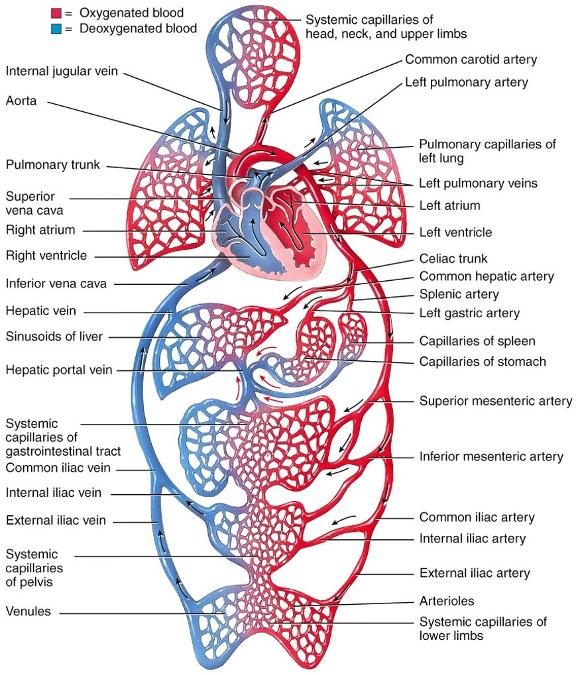 Parallel blood flow Each organ receives its own supply of oxygenated blood Two basic routes for blood flow:
|
front 61 Systemic Circulation | back 61
|
front 62 Major Arteries | back 62 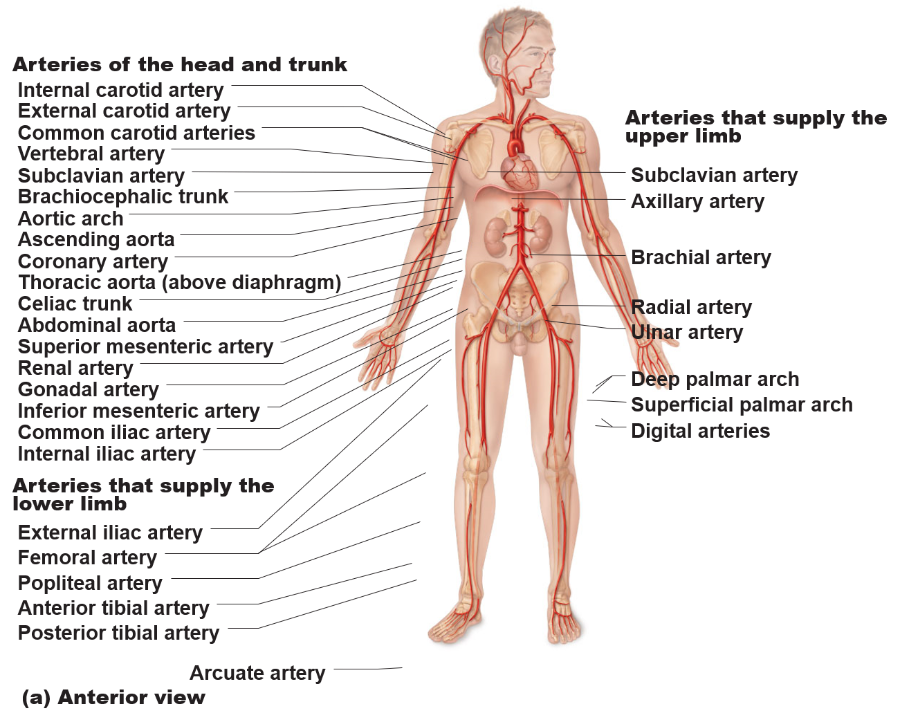 |
front 63 Major Veins of the Systemic Circulation | back 63 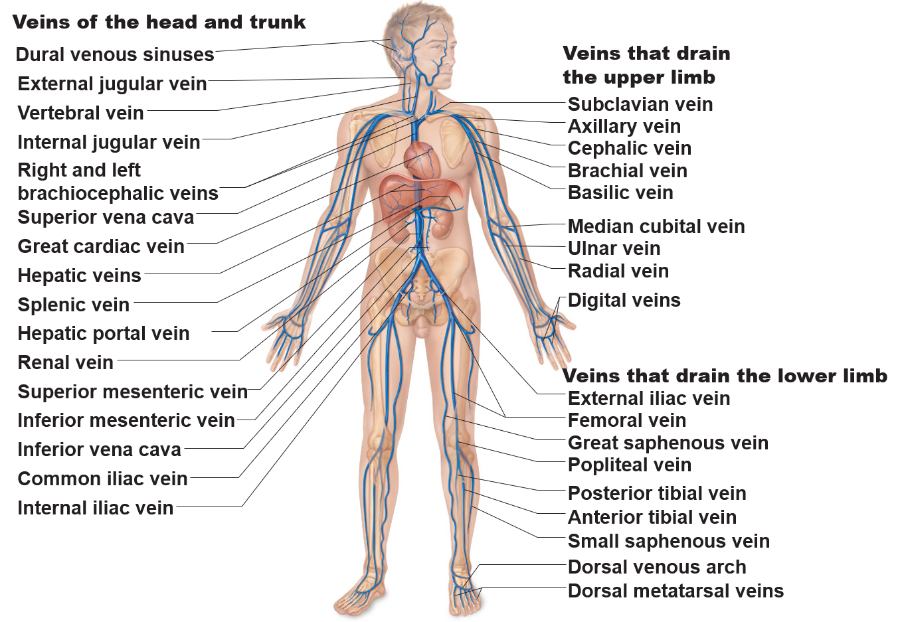 |
front 64 Physiology of Circulation
| back 64 volume of blood flowing through vessel, organ, or entire circulation in given period
|
front 65 Physiology of Circulation
| back 65 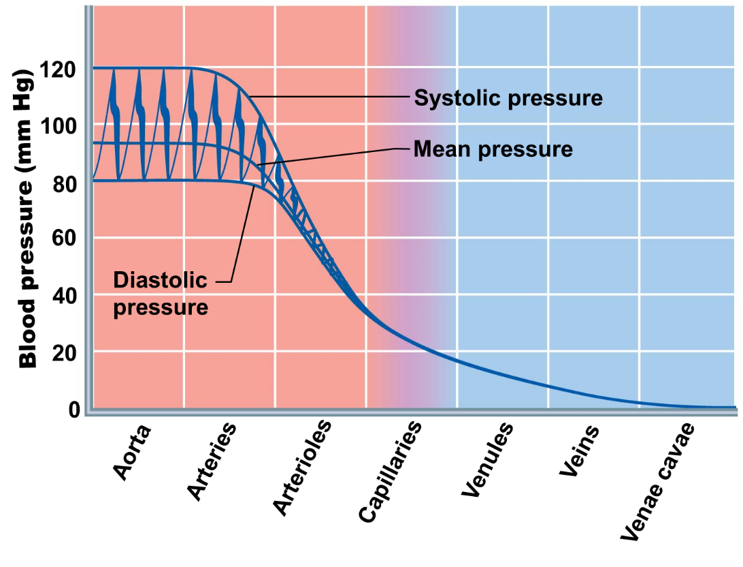 blood pressure per unit area exerted on wall of blood vessel by blood Measured as millimeters of Mercury (mm Hg) Pressure gradient: blood moves from higher to lower pressure areas |
front 66 Physiology of Circulation
| back 66 Opposition to flow; generally in systemic circulation Measure of amount of friction blood encounters with vessel walls |
front 67 Physiology of Circulation
| back 67 Constant: 1.Blood viscosity
2.Total blood vessel length
Variable: 3.Blood vessel diameter
|
front 68 Relationship Between Blood Flow, Blood Pressure, and Resistance | back 68 Blood flow(F) directly proportional to blood pressure gradient (change in P)
Blood flow inversely proportional to resistance (R)
Resistance more important in influencing local blood flow
|
front 69 Systemic Blood Pressure | back 69 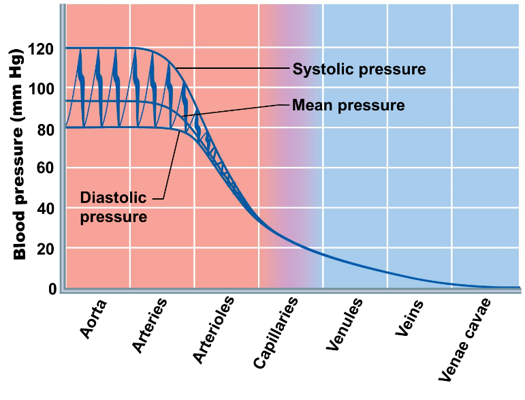 Blood Flow
Blood flow opposed by resistance -->Pressure Blood Pressure
Arteries close to the heart are flexible and accommodate high volume |
front 70 Arterial Blood Pressure | back 70 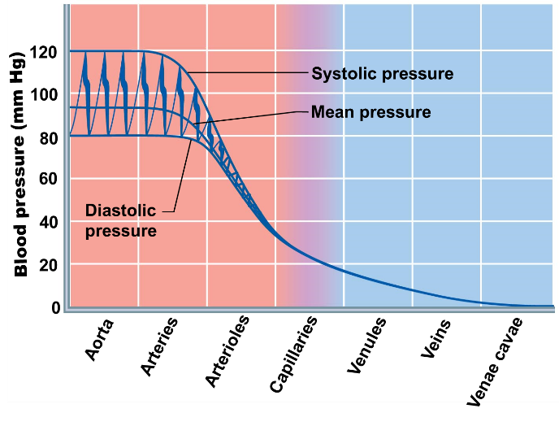 systolic pressure: pressure exerted in aorta during contraction of left ventricle (systole)
Diastolic pressure: lowest level of aortic pressure
|